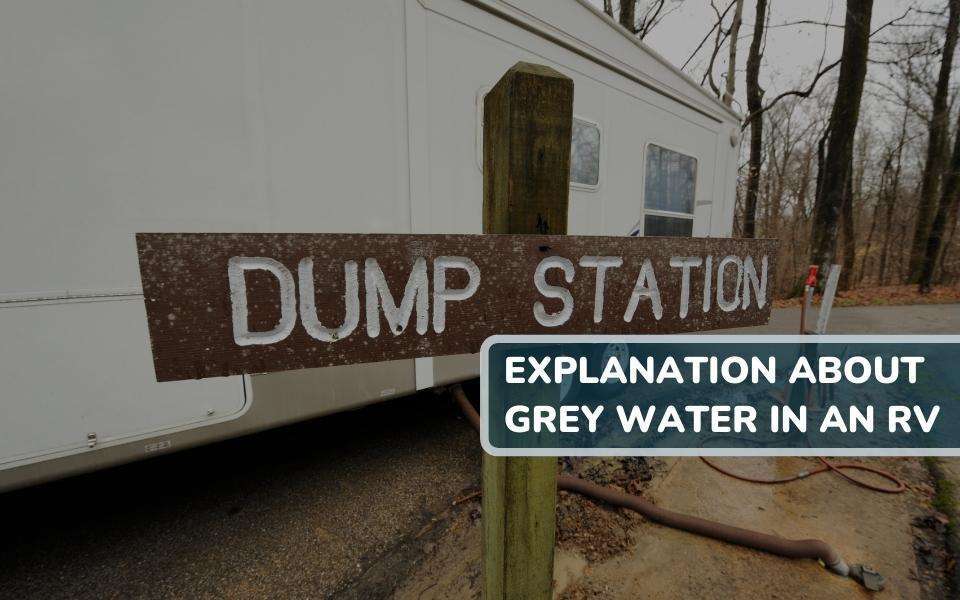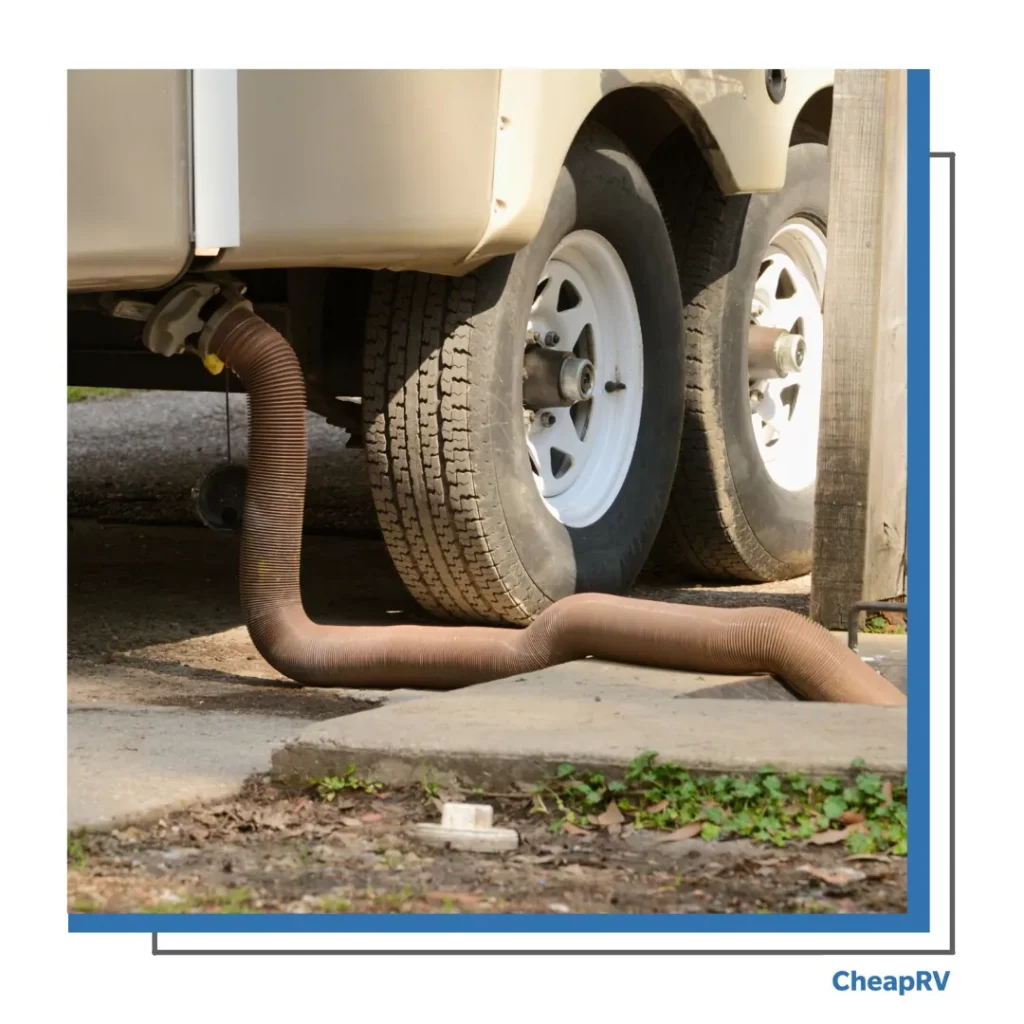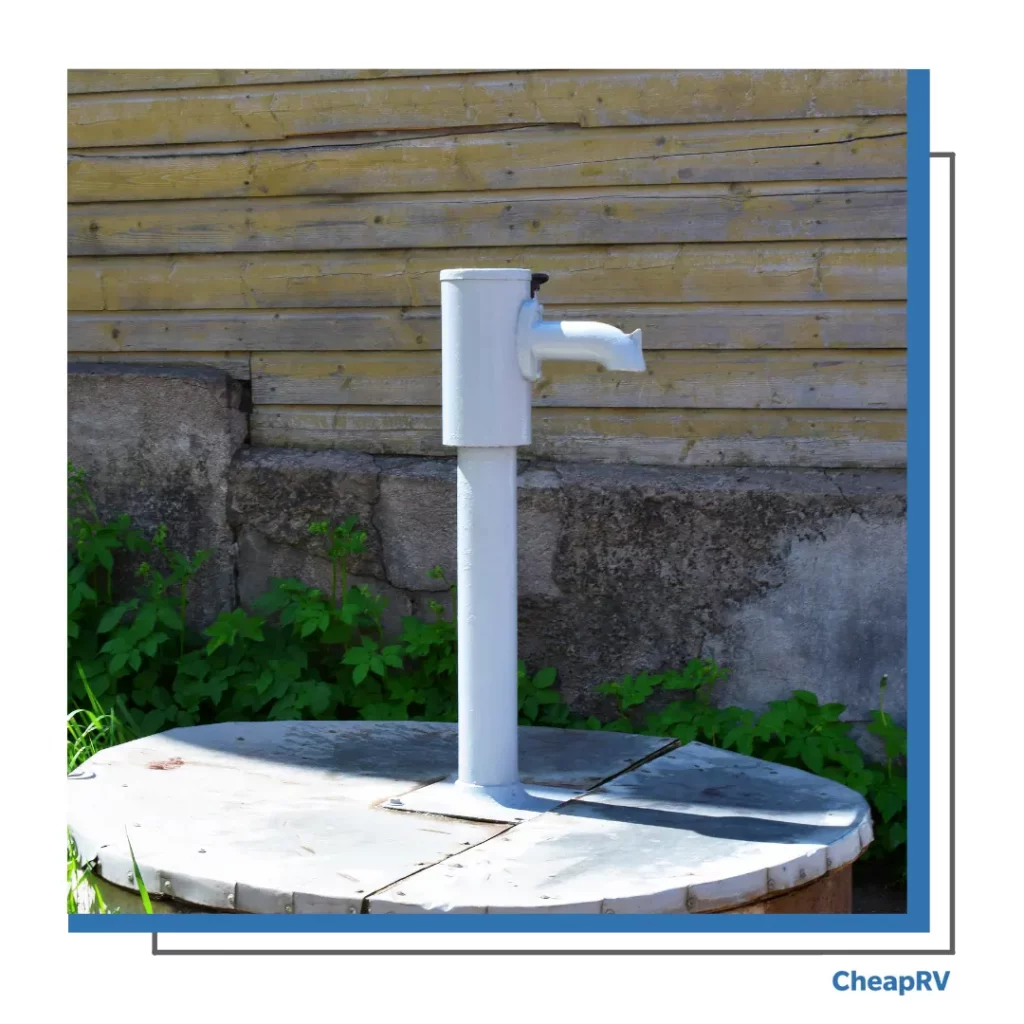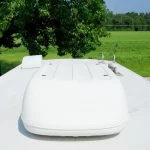
What Is Grey Water In An RV: The Ultimate Explanation
Grey water in an RV? What is it and how to deal properly with it? RV is a great solution for exploring the country or just taking a nice vacation. However, when you are on the road, knowing how to dispose of wastewater and what to do with Grey water can be difficult.
Many think all wastewater should be disposed of at a dumping station, but this is not always possible or practical. Your RV will have a greywater system, but you may not know how to use it properly. We’ll show you how to use it, but first, we’ll tell you what grey water is.
What Is Grey Water In An RV?
Grey water is simply used for washing dishes, clothes, and bathing. It’s also known as wastewater, the name given to any liquid waste that isn’t from toilets. In an RV, grey water is collected in a tank and treated before it’s released into the environment.
Every RV usually comes with two types of wastewater tanks. One is the grey water tank, and the other is the black water tank. The grey water tank is usually located under the sink or in another area of your RV.
Sometimes, you can find it behind a cabinet door or under another part of your RV’s plumbing system. The size of this tank varies depending on how much space you have available within your RV or where you want it placed.
RV’s Holding Tanks
There are three main types of RV holding tanks, each with a different purpose. Let’s go into detail on these tanks and how they work.
Grey Water Holding Tank
A grey water holding tank is a tank that collects wastewater from sinks and showers, as well as from the washing machine. The grey water holding tank is separate from the black water holding tank (used for toilet waste), but both are connected to the same sewer line.
Fresh Water Holding Tank
The freshwater holding tank is usually located in the RV’s bathroom, and it’s used to store water you use while showering, washing dishes, and flushing the toilet. These tanks are typically made of plastic or fiberglass and can hold 5 to 20 gallons of water.
As you might imagine, you should also empty these tanks regularly—usually every 4-6 days. You’ll have to empty them manually by opening up the valve at their base and letting the contents drain into your RV’s waste system.
Black Water Holding Tank
Black water is a type of wastewater that contains human excreta and results from using the bathroom. This type of waste is stored in a black water holding tank with a separate line to drain it from your RV.
The black water tank is typically located underneath the toilet or sink in an RV, but some RVs have the black water tank installed above ground outside the vehicle.
RV Grey Water Tank’s Average Capacity
It’s hard to state the holding capacity of an RV grey water tank. The problem with stating the capacity of a greywater tank is that it depends on the type of RV you have, its class, and size. (e.g., Class A, Class B, and C).
Here are the major classes of RV and their respective grey water tank capacity:
Class A RV: The average capacity of a Class A RV grey water tank is 40 to 65 gallons (150 – 195 liters). It means you’ll have plenty of space to store wastewater from washing dishes and bathing. However, if you find that your tank is consistently full and overflowing, it may be time to upgrade to a larger size.
Class B Motorhome: The average capacity of a Class B RV grey water tank is 30 gallons (113 liters). This size is ideal for families who often camp in their RVs and want to minimize their trips to dump stations when they’re on the road.
Class C Motorhome: The average capacity of a Class C RV’s grey water tank is between 35 and 50 gallons. It is the smallest version of an RV, with limited space inside but plenty of room outside for storing items on its exterior racks or underneath its trailer hitch.
Travel Trailer: The average capacity of a travel trailer’s grey water tank is between 35 and 50 gallons. This type of trailer has less square footage than an RV because it doesn’t include any sleeping quarters within its walls, but it has a kitchen area you can access from outside via sliding doors or windows.
Fifth- Wheels: The average capacity of a fifth wheel’s grey water tank is usually 95 gallons or above. However, larger models of fifth wheels usually have greater capacity.
How Often Should You Empty Your RV Grey Water Tank?
It is recommended that you empty your grey water tank as soon as you use up two-thirds of its capacity (i.e., ⅔ of tank capacity). However, other factors may determine how often you should empty your RV’s grey water tank.
Here are two of the most important factors:
Usage of Water
Before you hop in the shower, check your grey water tank to see how full it is. You’ll want to keep an eye on it as you shower since water usage varies from person to person. On average, a person uses about 10 gallons of water when they shower, so it would take about 4 – 6 showers to fill up your tank.
If you are RVing with people, your RV’s grey water tank will get filled quickly—meaning you have to empty it more often. And the rate at which you use water will determine how often you’ll have to empty your tank.
If you’re traveling with only one other person, emptying your tank every few days might be enough. But if four people are sharing one bathroom? Then, you might need to empty it daily.
RV Tank Size
The size of your RV’s grey water tank will be the main factor in how often you have to empty it. A smaller tank can be emptied more frequently than a larger one, as the larger volume of water will take longer to dissipate.
If you’re traveling with a large group or with many pets, or if your tank is particularly full, it may be necessary to empty it more frequently than if you were traveling alone or with fewer people or animals.
Additional Tips
When driving around, your RV’s water tank gauge will likely fluctuate. The reason is that the tank’s pressure can change dramatically as you drive up and down hills and over bumps. It’s important to check your gauge frequently.
You also need to understand that your RV’s grey water tank gauge is not always accurate. As a result, it’s important not to rely on it as your only source of information when determining how much water is in your tank. Instead, you may get more accurate results by calculating yourself.
Also, not emptying your RV’s grey water tank too frequently will ensure that solid materials have time to settle within the tank. On the other hand, if you empty it too often, these solids could end up floating on top of the water, ruining your plumbing system, or clogging up your drain pipes.
If Your RV Grey Water Tank Becomes Full, What Happens?
The thing TO DO after your RV grey water tank gets full is to dump it. And dumping your RV’s grey water tank is pretty easy, but there are a few things to keep in mind.
First, make sure you’re at a dump station. You must find a place that offers this service because it’s illegal to dump greywater elsewhere.
Dump stations are available at most campsites, campgrounds, and RV Parks. The staff at these locations will help you take care of the process. You’ll likely be asked how much water you’re dumping so they can be sure they have enough space for the water in their tanks.
Finally, abide by local guidelines when dumping your grey water tank. Some areas may require a hose or bucket to properly dispose of your wastewater (usually because of local wildlife). Be sure to follow all instructions from your campsite or RV Park staff members.
How To Dump Waste Water from RV Grey Water Tank?
The procedure to dump the wastewater from your RV’s greywater tank is pretty easy. Here’s how:
Ensure you’ve got your RV’s waste and dump station hose connected to the dump station’s supply side.
Open the drain valve on your RV to allow water to flow into the waste tank.
Open the drain valve on the dump station to allow water to flow into its waste tank.
When you’re done, close both valves, disconnect hoses from their respective tanks, and leave them outside for cleaning or disposal.
How To Maintain RV Grey Water Tank?
Unlike the black water tank, it is easier to maintain the grey water tank. The reason is that the grey water tank does not collect huge solid waste so you don’t have to go through too much stress cleaning it. However, you still need to know a few tips to help your greywater tank maintenance process.
First, you need to avoid frequently emptying the tank. When you keep your RV gray water tank empty, it can lead to an accumulation of mold and mildew. That will make your RV smell bad, and it will also be a breeding ground for mosquitoes. To avoid this, try to avoid emptying your RV gray water tank more than once a week.
Antifreeze is a good product for preventing freezing in cars and trucks, but you should never use it in an RV’s drainage system. Antifreeze products can cause corrosion in the pipes, which could lead to leaks and even breakage that would require expensive repairs.
Use propylene glycol instead of antifreeze products if you need something to prevent freezing in your RV’s plumbing system.
When you clean your gray water tank, add some washing liquid before draining it. That will help keep any residue from clogging up your drain hose.
Final Words
It may seem complicated initially, but grey water is a fairly straightforward and non-toxic solution.
Though you should check your owner’s manual for details on locations and amounts, pretty much any wet material from your sink or shower can go down your RV’s gray water drain. After all, the purpose of greywater treatment is to recycle that waste and make it environmentally friendly.










